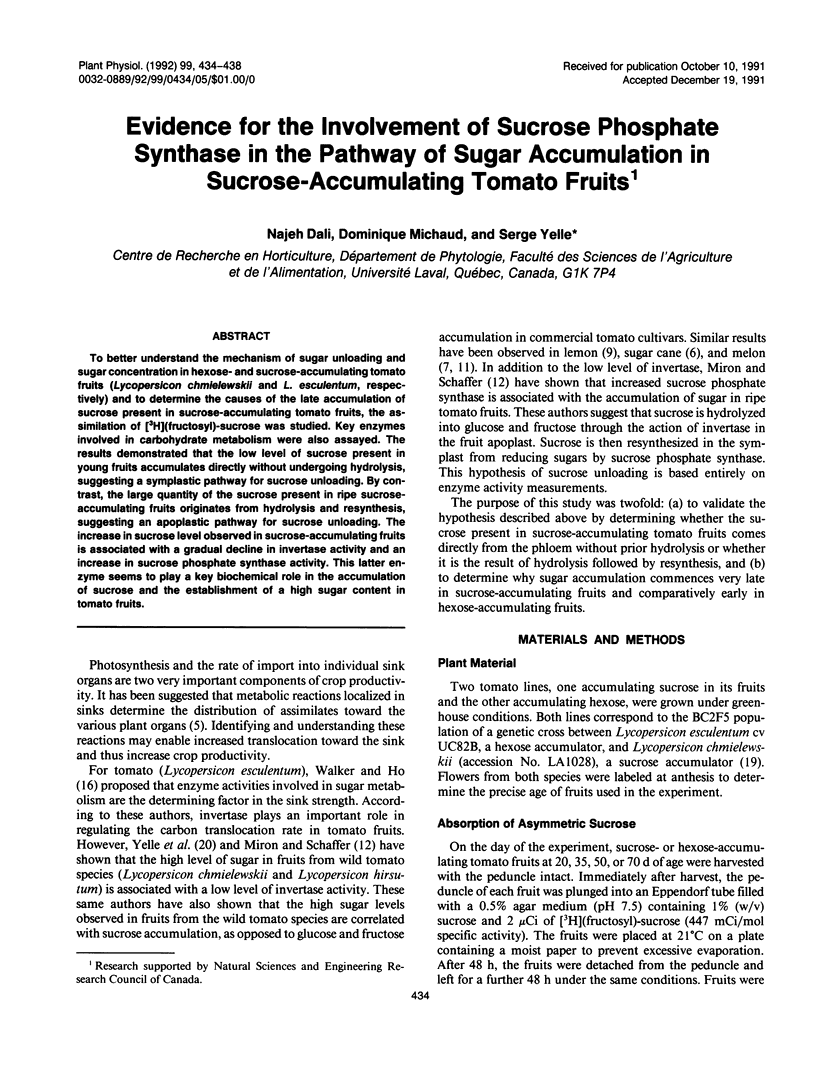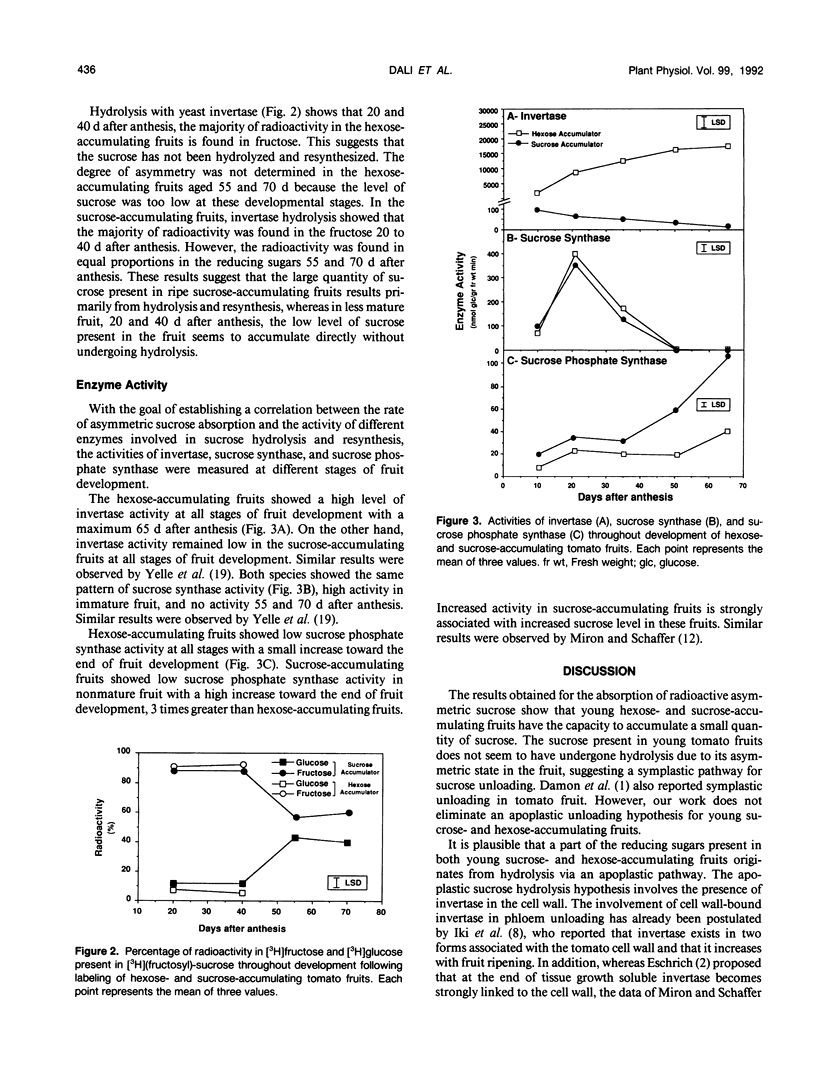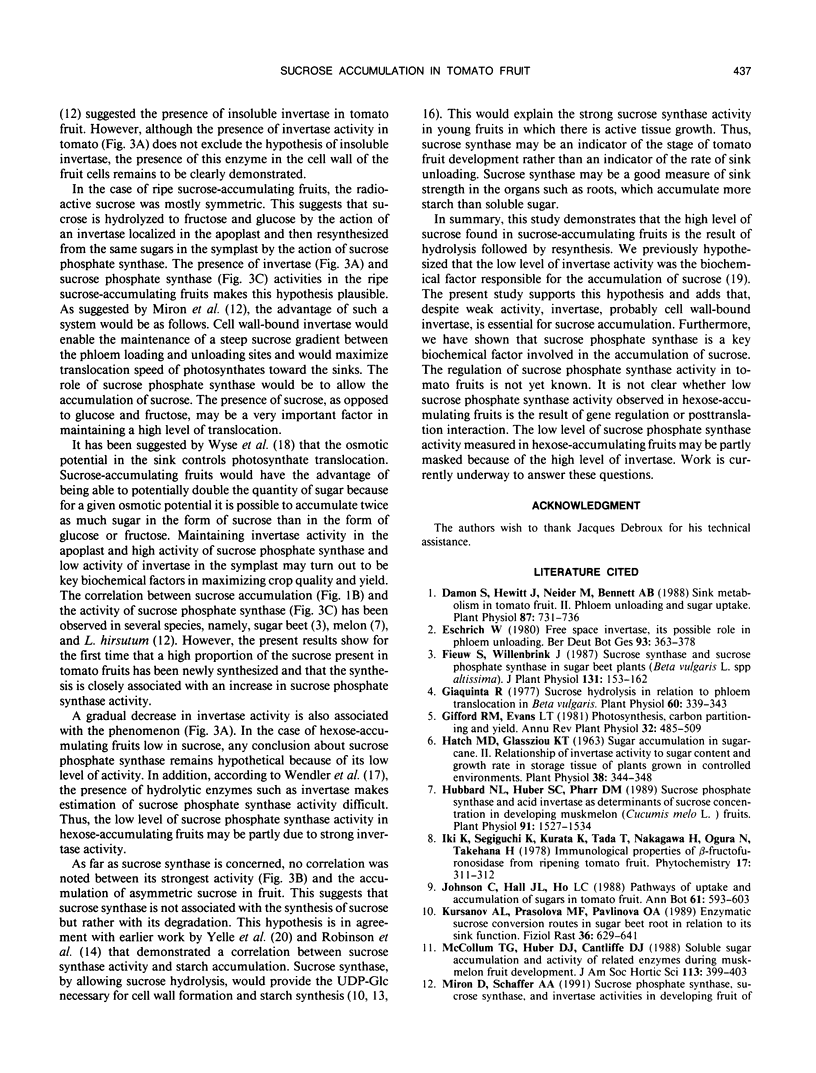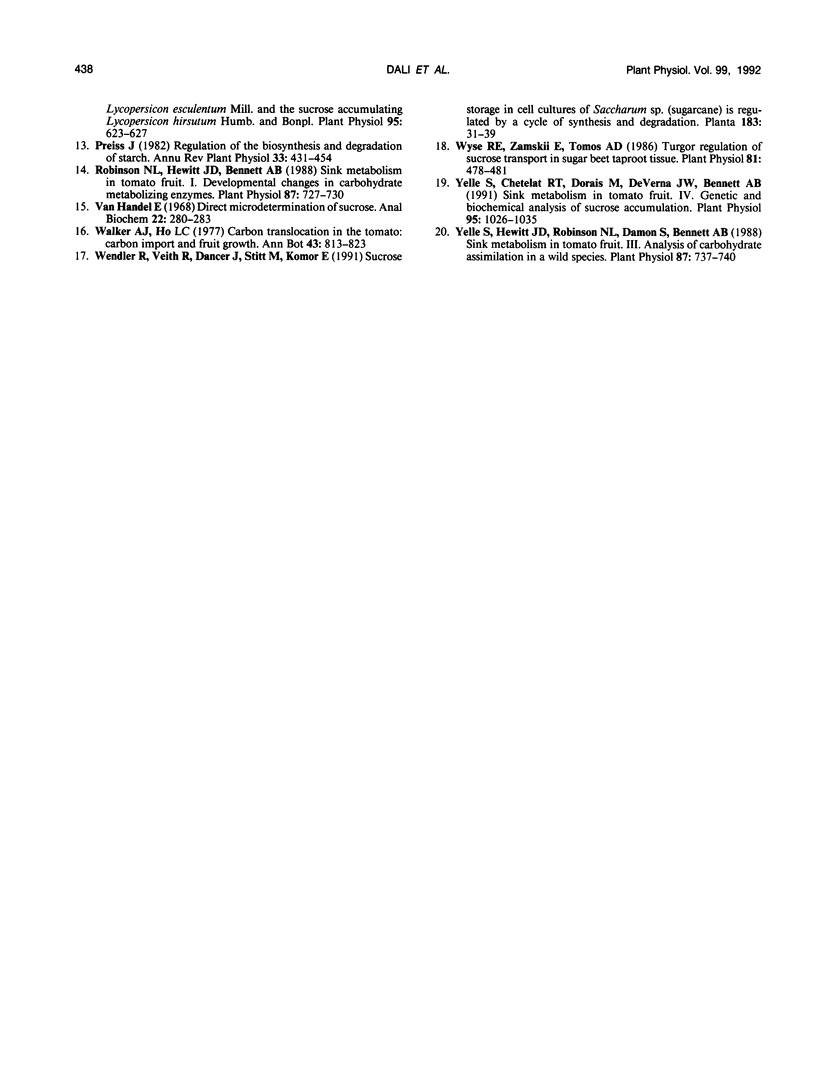Abstract
To better understand the mechanism of sugar unloading and sugar concentration in hexose- and sucrose-accumulating tomato fruits (Lycopersicon chmielewskii and L. esculentum, respectively) and to determine the causes of the late accumulation of sucrose present in sucrose-accumulating tomato fruits, the assimilation of [3H](fructosyl)-sucrose was studied. Key enzymes involved in carbohydrate metabolism were also assayed. The results demonstrated that the low level of sucrose present in young fruits accumulates directly without undergoing hydrolysis, suggesting a symplastic pathway for sucrose unloading. By contrast, the large quantity of the sucrose present in ripe sucrose-accumulating fruits originates from hydrolysis and resynthesis, suggesting an apoplastic pathway for sucrose unloading. The increase in sucrose level observed in sucrose-accumulating fruits is associated with a gradual decline in invertase activity and an increase in sucrose phosphate synthase activity. This latter enzyme seems to play a key biochemical role in the accumulation of sucrose and the establishment of a high sugar content in tomato fruits.
Full text
PDF




Selected References
These references are in PubMed. This may not be the complete list of references from this article.
- Damon S., Hewitt J., Nieder M., Bennett A. B. Sink Metabolism in Tomato Fruit : II. Phloem Unloading and Sugar Uptake. Plant Physiol. 1988 Jul;87(3):731–736. doi: 10.1104/pp.87.3.731. [DOI] [PMC free article] [PubMed] [Google Scholar]
- Giaquinta R. Sucrose Hydrolysis in Relation to Phloem Translocation in Beta vulgaris. Plant Physiol. 1977 Sep;60(3):339–343. doi: 10.1104/pp.60.3.339. [DOI] [PMC free article] [PubMed] [Google Scholar]
- Hatch M. D., Glasziou K. T. Sugar Accumulation Cycle in Sugar Cane. II. Relationship of Invertase Activity to Sugar Content & Growth Rate in Storage Tissue of Plants Grown in Controlled Environments. Plant Physiol. 1963 May;38(3):344–348. doi: 10.1104/pp.38.3.344. [DOI] [PMC free article] [PubMed] [Google Scholar]
- Hubbard N. L., Huber S. C., Pharr D. M. Sucrose Phosphate Synthase and Acid Invertase as Determinants of Sucrose Concentration in Developing Muskmelon (Cucumis melo L.) Fruits. Plant Physiol. 1989 Dec;91(4):1527–1534. doi: 10.1104/pp.91.4.1527. [DOI] [PMC free article] [PubMed] [Google Scholar]
- Robinson N. L., Hewitt J. D., Bennett A. B. Sink metabolism in tomato fruit : I. Developmental changes in carbohydrate metabolizing enzymes. Plant Physiol. 1988 Jul;87(3):727–730. doi: 10.1104/pp.87.3.727. [DOI] [PMC free article] [PubMed] [Google Scholar]
- Van Handel E. Direct microdetermination of sucrose. Anal Biochem. 1968 Feb;22(2):280–283. doi: 10.1016/0003-2697(68)90317-5. [DOI] [PubMed] [Google Scholar]
- Wyse R. E., Zamski E., Tomos A. D. Turgor regulation of sucrose transport in sugar beet taproot tissue. Plant Physiol. 1986 Jun;81(2):478–481. doi: 10.1104/pp.81.2.478. [DOI] [PMC free article] [PubMed] [Google Scholar]
- Yelle S., Chetelat R. T., Dorais M., Deverna J. W., Bennett A. B. Sink Metabolism in Tomato Fruit : IV. Genetic and Biochemical Analysis of Sucrose Accumulation. Plant Physiol. 1991 Apr;95(4):1026–1035. doi: 10.1104/pp.95.4.1026. [DOI] [PMC free article] [PubMed] [Google Scholar]
- Yelle S., Hewitt J. D., Robinson N. L., Damon S., Bennett A. B. Sink Metabolism in Tomato Fruit : III. Analysis of Carbohydrate Assimilation in a Wild Species. Plant Physiol. 1988 Jul;87(3):737–740. doi: 10.1104/pp.87.3.737. [DOI] [PMC free article] [PubMed] [Google Scholar]


